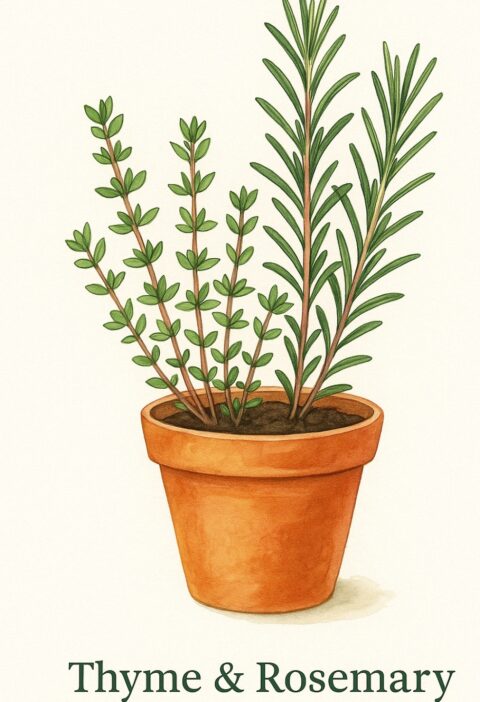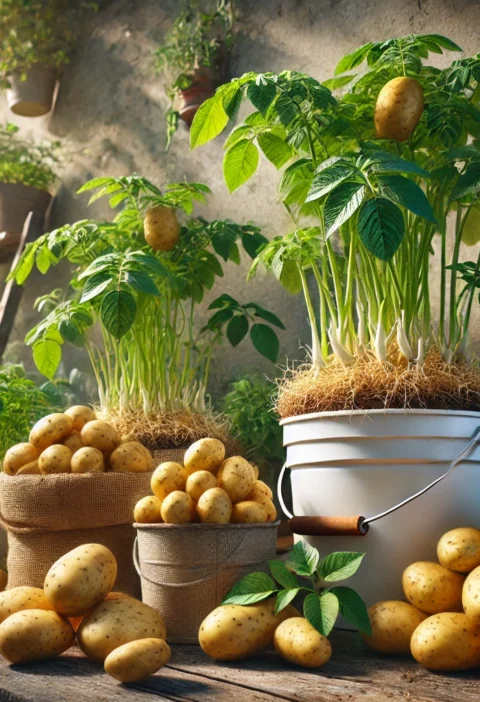Spider Plants: From Ancient Lore to Modern Air Purifiers
1. Historical & Cultural Anecdotes
The spider plant (Chlorophytum comosum) has been in human care far longer than most houseplants. Its documented journey begins in the lush forests of tropical and southern Africa, but it did not remain there. Early European explorers of the 19th century encountered it in Natal (now KwaZulu-Natal, South Africa) and brought specimens back to Europe. By the late Victorian era, spider plants were prized in England’s conservatories and terrariums, where they thrived in the humid, enclosed glass cases of the Wardian models.
Victorian Terrariums: In the 1860s, botanist Nathaniel Bagshaw Ward’s invention of the Wardian case—essentially a sealed glass cabinet—sparked a craze for indoor gardens. Spider plants proved ideal: tolerant of low light, resilient to humidity, and capable of sending out arching “spiderettes” that delighted gardeners. Ladies and gentlemen of the era tucked these cases into their parlors, believing them to cleanse the heavy coal-smoke air and bring a piece of distant jungles into their Victorian homes.
Mid-Century Modern Design: Jump to the 1950s and 60s, and designers like Florence Knoll and architects of the Bauhaus revival promoted greenery as a key element of healthy modern interiors. Spider plants, with their linear foliage and ease of care, became ubiquitous in offices and apartment blocks. Their use aligned with post-war ideals of simplicity, function, and a clean aesthetic. They also aligned with early thoughts on biophilic design—the idea that humans thrive when connected to nature.
NASA’s Clean Air Study: The spider plant’s most celebrated moment arrived in 1989, when NASA, in collaboration with the Associated Landscape Contractors of America, conducted a landmark study on indoor air pollution. They sealed common pollutants—formaldehyde, benzene, trichloroethylene, xylene—and tested various houseplants’ abilities to remove them. Spider plants removed up to 95% of formaldehyde within 24 hours, firmly establishing their role not only as decorative greenery but as functional air purifiers.
2. In-Depth Chemistry & Mechanisms of Action
Understanding how spider plants cleanse air requires a look at plant-microbe interactions and basic biochemistry. When volatile organic compounds (VOCs) like formaldehyde or benzene are present, spider plants use a multi-step process:
2.1 Leaf Uptake
- Stomatal absorption: Tiny pores on the leaf surface—stomata—open to allow gas exchange. VOCs diffuse through these openings into the leaf’s internal airspaces.
- Cuticular adsorption: The waxy layer covering leaves (cuticle) adsorbs some hydrophobic compounds directly onto its surface, reducing airborne concentrations.
2.2 Translocation to Roots
- Once inside, VOCs move via the transpiration stream—water pulled from roots to leaf tips—to the root zone in the soil.
- This movement relies on capillary action and the cohesion-tension theory of water transport in xylem vessels.
2.3 Microbial Degradation in the Rhizosphere
- The rhizosphere—the soil region immediately surrounding roots—is rich in specialized bacteria and fungi.
- These microbes express enzymes (e.g., dehydrogenases, oxygenases) that oxidize VOCs into harmless end products like CO2, H2O, and simple organic acids.
2.4 Formaldehyde to Formate Conversion
Specifically for formaldehyde (HCHO), studies reveal bacterial pathways involving formaldehyde dehydrogenase, which catalyzes the conversion:
HCHO + NAD+ + H2O → HCOO− + NADH + 2H+The formate (HCOO−) then enters central metabolic routes or is further oxidized to CO2.
2.5 Benzene & Aromatics
For benzene and toluene, fungal and bacterial oxygenases add molecular oxygen to the aromatic ring, generating epoxides that spontaneously rearrange and open into polyols. These compounds feed into the Krebs cycle of the microbes, ultimately releasing CO2.
3. Step-by-Step Care Lessons
To maximize air-cleansing performance, spider plants must be healthy and vigorous. Follow these detailed care guidelines:
3.1 Potting & Soil
- Soil mix: Combine 2 parts peat-based potting soil, 1 part perlite, 1 part chopped bark or coarse sand for drainage.
- pH level: Aim for slightly acidic to neutral (6.0–7.0). Use a soil test kit and amend with garden lime or sulfur as needed.
- Container: Choose a pot with drainage holes. Allow 1–2″ space around root ball to encourage growth.
3.2 Light & Placement
- Spider plants prefer bright, indirect light. Place 3–5 feet from an east or north-facing window.
- Direct afternoon sun can scorch leaves—provide sheer curtains or move slightly away.
- In lower-light interiors, rotate plants regularly to ensure even growth.
3.3 Watering & Humidity
- Water thoroughly when the top 1″ of soil is dry. This averages once per week in most homes; adjust for season and indoor climate.
- Avoid letting plants sit in saucers of standing water—roots need oxygen.
- Maintain moderate humidity (40–60%). Mist leaves weekly or use a pebble tray filled with water beneath the pot.
3.4 Feeding & Maintenance
- Fertilize spring through early fall monthly with a balanced 20-20-20 houseplant fertilizer at ½ strength.
- Prune off any brown or yellowed leaves to direct energy to healthy growth.
- Propagate baby plantlets by placing spiderettes in moist potting mix until roots form (2–3 weeks), then transplant.
4. Extended Case Studies
Here are three real-world implementations documenting spider plants’ air-purifying impact in diverse settings:
| Setting | Setup | Measured Improvement | Outcome |
|---|---|---|---|
| Home Office, Chicago | 4 spider plants on desk/shelves; VOC sensor installed | Formaldehyde down 85% in 24 h; benzene down 70% | Fewer headaches reported; 20% increase in reported focus |
| Daycare Center, Seattle | 8 large spider plants in playrooms; CO2 monitor used | CO2 levels reduced by 12% during active play | Staff noted calmer behavior; reduced afternoon naps needed |
| Call Center, Atlanta | Row of 15 plants along cubicle wall; PM2.5 sensor in use | PM2.5 particulate matter dropped 30% over 72 h | Employees reported fewer sore throats; improved air comfort scores |
5. Troubleshooting & Pro Tips
Even resilient plants encounter issues. Use this guide to diagnose and correct common spider plant problems:
| Symptom | Likely Cause | Solution |
|---|---|---|
| Brown leaf tips | Fluoride or chlorine in tap water; low humidity | Use filtered or rainwater; increase humidity; trim tips with sterile scissors |
| Yellow leaves | Overwatering; poor drainage | Allow deeper soil drying; repot in well-draining mix; check root health |
| Leggy growth | Insufficient light | Move to brighter spot; rotate weekly; supplement with grow light if needed |
| Root rot | Constantly wet soil | Trim mushy roots; repot into fresh, dry mix; reduce watering frequency |
| Pests (aphids, mealybugs) | Low plant vigor; lack of airflow | Wipe leaves with insecticidal soap; increase air circulation; isolate infected plants |
Conclusion
From its storied past in Victorian terrariums to NASA’s pivotal Clean Air Study, the spider plant remains an enduring symbol of nature’s capacity to heal our indoor environments. By understanding its historical journey, the intricate chemistry of VOC removal, detailed care requirements, documented case-study successes, and expert troubleshooting, you can harness the full power of this unassuming green ally. Place a healthy spider plant in every 200 ft² of living space, maintain optimal conditions, and breathe easier knowing you’ve brought a piece of ancient botanical wisdom indoors.






